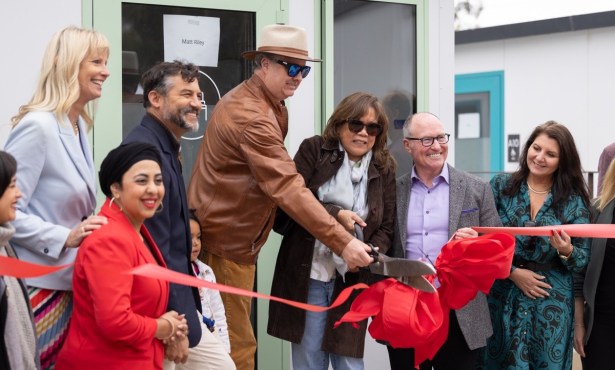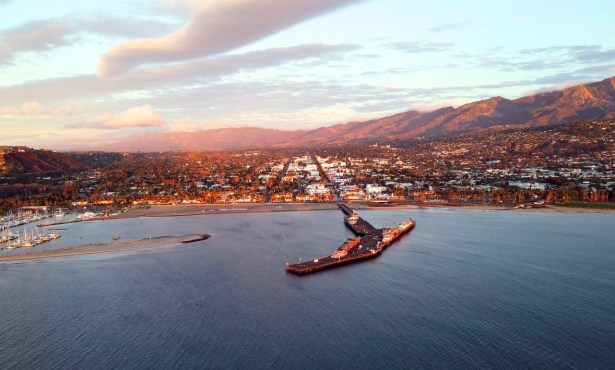Santa Barbara Train Service Included in State Rail Plan
Draft Transit Report Has Plans to Make Plans

A deep dive into rail transportation patterns and schedules instantly tells you why adding commuter-friendly service for Santa Barbara moves at a glacial pace. California’s recently released draft Rail Plan for 2018 expends 249 pages of ink discussing forward-looking plans for fragments of track, including the section between Ventura and Santa Barbara, running through a multiplicity of jurisdictions and ownerships and myriad stakeholders.
For projects envisioned through 2022, funding is identified, including the fuel hike that started November 1. The plan is in a public comment period, which ends December 11. More can be learned about the rail plan during a webinar on Wednesday, December 6 at noon; register here. The managing director for the area rail agency, Jennifer Bergener, will give an update at the Santa Barbara County Association of Governments committee meeting on Wednesday, December 13, 1:30 p.m., Metropolitan Transit District, 550 Olive Street.
Santa Barbara sits at the bottom of the LOSSAN North rail corridor agency — LOSSAN stands for Los Angeles, San Diego, San Luis Obispo. For all the talk about commuter rail for Santa Barbara, what LOSSAN has planned for 2018 is to develop computer modeling of track usage between Santa Barbara and Ventura, and include stakeholders and freight operators to see how and if passenger and freight movement could be integrated.
To explain the complexities involved, Shalini Chandra of Caltrans’s rail division, gave LOSSAN South efforts as an example. In the Los Angeles area, rather than considering two sets of track to move people and freight simultaneously, they’ve begun to look at the “bare necessities” needed to get more service going, such as crossings for both automobiles and pairs of trains, and sidings needed to let trains pass, including long freight trains. Hence, computer modeling of track usage.
The modeling for Santa Barbara–Ventura — by SMA Rail Consulting of Santa Ana — once completed would next go to freight operators for an analysis of how it fits in with their operations. Of the seeming indifference of freight operators to passenger rail needs, Chandra said it would be “hard to beat logic” if workable timetables are figured out, plus access fees proposed, not just funds for capital maintenance. But it all takes time.
Caltrans, which plans in four-year cycles, has a 2022 goal to look at improved peak-period service between Los Angeles and Goleta by adding double-tracking at the Van Nuys Station — which would allow two trains to pass simultaneously — and extending the length of siding at Ventura’s Seacliff area to allow a freight train to idle as another train passes. The double-tracking is part of $110 million to improve service for LOSSAN North, and the Seacliff extension could cost $23 million. One of the goals of the computer simulation is to see how many trains can be present along the existing tracks at one time; for instance, if two passenger trains are at a station, can a freight train go by?
Ultimately, what improved rail service can do is reduce emissions by getting cars off congested freeways. With added intercity and regional trains, Caltrans’s plan states that passengers could increase ten-fold by 2040, or more than 1.3 million rides per day. The carbon dioxide savings would be 13 million metric tons annually. Another climate change consideration briefly touched on is a conservative three-foot-rise estimate for sea level by 2100 on low-lying track, including areas between Surf and Ventura.
Along with federal money and grants and local municipality funding, Senate Bill 1 will fund the projects outlined through 2022. SB1’s new “gas tax,” which increased fuel and vehicle taxes and fees, raises $5.4 billion annually for California road repairs and upgrades as well as transit improvements like rail.
Beyond 2022 are exciting plans involving running high-speed rail between Los Angeles’ Union Station and Burbank airport, propelled by electricity delivered by 100 percent renewable energy sources. High-speed rail included in Vision 2040 would connect to regular train service to San Diego and Goleta via intercity and regional trains, improvements Santa Barbara County has been awaiting for decades.


